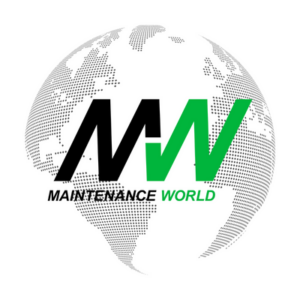Case Study: CMMS Implementation for SMBs
Paweł Bęś, Logistics and Maintenance Marketing Expert, QRmaint
Posted 4/8/2025
When we think about CMMS system implementation, whether for a big manufacturing plant or an SMB (small and medium-sized business), the requirements for its usability remain the same. Companies are searching for a solution to help handle plan downtime, replace spreadsheets for reporting and controlling, and a robust tool for fault reporting.
Looking at the Europe Operations and Maintenance Benchmark elaborated by IFMA, only 20% of surveyed companies use CMMS (Computerized Maintenance Management System) in favor of MS Excel spreadsheets, which are still used by over 69%. IFMA surveyed only several countries, such as Austria, Holland, England, Poland, Germany, Spain, Ireland, and Switzerland, but it still gives a clear glimpse of where manufacturing facilities stand. Believe it or not, by looking at IFMA’s stats from the US market, this trend doesn’t fall far from the findings in Europe. All over the world, companies are putting much attention on having easy-to-use tools, as for many, a CMMS system remains a complex and expensive solution. Nothing is further from the truth than this.
However, lack of knowledge presents an incorrect picture to end users of CMMS in manufacturing and prevents them from shifting their operations to more suitable and mobile solutions. This also became a major issue because many are convinced that the implementation and onboarding process is much more complicated, expensive, and time-consuming. It’s hard to overcome these aspects when everyone has such limited time and staff are mostly overloaded with coping with innovations and getting on the learning curve for new processes (often much easier and paperless).
In this article, we’ll give you a better picture of how the implementation and onboarding process for a CMMS system works to demonstrate that it is a suitable tool for big manufacturing plants as well as small and medium-sized businesses. The following is an example of CMMS implementation in a metal smelting company that falls under the small and medium-sized business range.

Why does the CMMS system seem to be difficult to implement?
When you’re an SMB and find a company offering a CMMS system, you reach a point where you’re standing in front of 10 steps to implement the system. There’s a 50-page guideline covering everything from preparing the business case and discovery phase to change management, defining KPIs, and so on.
Many companies offering CMMS systems are actually custom development software providers. They approach implementation as a bottom-up process, where they need to learn your business from the beginning, analyzing each process step by step. At first glance, this seems like a highly professional and well-structured approach. However, on the other hand, it reveals a lack of industry knowledge, a poor understanding of manufacturing, and weak infrastructure management expertise.
In short, they create an overwhelming perception of complexity and high costs, which is the first thing that makes CMMS system implementation seem so difficult.
I’m not saying some of these steps aren’t important—they are. On the other hand, this approach makes the process much more difficult for less computer-savvy personnel, maintenance managers, and so on.
In fact, people who need a CMMS system often become very reluctant due to their inability to understand such a complex approach. So, it’s not just about providing clear information to end users about what CMMS is, but also about ensuring that onboarding and development are easy to implement.

Implementing a CMMS can indeed present challenges. Here’s a breakdown of the common reasons why CMMS implementation remains hard to process:
- Lack of Clear Goals and Objectives: Different teams may have conflicting priorities without well-defined goals, leading to inefficient use of the CMMS. Moreover, many companies don’t know what they really need, and that’s why the whole process fails. Not identifying specific needs can result in choosing a CMMS with unnecessary features or lacking essential ones.
- Data Quality and Migration: Data entry is always a challenge. Companies input inaccurate and incomplete asset data, causing mismatches. It all seems time-consuming and prone to errors. Poor data quality undermines the system’s effectiveness once they plan to transfer existing data from legacy systems.
- User Adoption and Training: There is usually huge resistance to change. Employees may resist adopting new software, especially if they are accustomed to manual processes. Moreover, they receive insufficient training and lack support afterward. Inadequate training can lead to user frustration and underutilization of the CMMS.
- Complexity and Customization: Software complexity can often be overwhelming. Some CMMS systems are complex and require significant time and effort to learn and use. Customization needs come up, and tailoring the CMMS to specific business requirements can be difficult and costly.
- Project Management and Planning: Along with the implementation process comes a lack of planning. We have often seen that insufficient planning can lead to delays, budget overruns, and implementation failures. Companies usually don’t have strong in-house project management. This is why effective project management is crucial—not only for coordinating tasks and managing resources but also for ensuring timely implementation.
- Organizational and Cultural Factors: When companies already have a CMMS system, management support is often lacking. We have usually seen that CMMS implementation lacks the necessary resources and commitment without strong management backing. It is also hard to change an organizational culture. A culture that resists change or lacks a focus on data-driven decision-making can hinder CMMS adoption.

CMMS System Implementation at a Metal Smelting Company
SMBs have unique characteristics and mostly struggle with a lack of staff. This brings significant challenges, as single individuals are often responsible for multiple tasks and cannot cope with all the daily demands. Shortage of staff is a real challenge.
For example, one maintenance manager or team leader may oversee up to ten employees, all responsible for keeping a production facility running. We have seen this scenario dozens of times in our portfolio of CMMS system implementations. It happens so frequently that we put significant attention into minimizing the onboarding time as much as possible.
The first striking point among SMBs that may need a solution is that they are searching for a way to solve a problem, not just software. The software isn’t the problem solver, but its features deliver such solutions. It also structures all workflows, replacing, for example, paperwork from maintenance process cycles.
A metal smelting company searching for a fault reporting system to better track their performance found our CMMS system through references from other friendly companies. They discovered they could create a free account and use the CMMS system for a 2-week trial period. This made their approach much easier, as they could access the CMMS system directly from mobiles and desktops using an internet browser, allowing them to play with the system’s features for 2 weeks at no cost to check its capabilities.
It became easy for them because the system is very intuitive and doesn’t require any complicated processes. There’s also a built-in help system that allows them to find answers to the most frequent queries.
After two weeks, we contacted them to set up a meeting with our entire onboarding team. They met with our maintenance engineer, who has 20 years of experience in maintenance operations and has worked with us for years. After less than an hour of meeting, they decided to implement the system for 10 users. They also received free support during onboarding, ongoing assistance, and a live subscription cycle.
In a very short period, the CMMS system has become an indispensable tool for them. So, we made the implementation of the CMMS system a lot easier. Why is that so? To summarize:
Risk-Free Evaluation with Free Trial: The 2-week free trial allows potential users to thoroughly test the CMMS in their own environment, reducing the uncertainty and risk associated with a new software purchase. This hands-on experience builds confidence and facilitates easier decision-making.
Intuitive Design and Browser-Based Access: The system’s user-friendly interface and browser-based accessibility eliminate the need for complex installations or extensive technical expertise. This simplifies the initial setup and lets users quickly become familiar with the software.
Built-in Help System for Self-Sufficiency: The integrated help system empowers users to find answers to common questions independently. Again, this reduces reliance on external support and accelerates the learning process.
Onboarding: An experienced maintenance engineer leads a focused, one-hour onboarding session that ensures users receive targeted guidance and practical insights. This efficient approach minimizes time investment and maximizes knowledge transfer.
Ongoing Support and Assistance: The commitment to continuous support throughout the subscription lifecycle provides users peace of mind and ensures that any implementation challenges are addressed quickly. This ongoing support fosters a smooth transition and facilitates long-term success.

Summary
The core challenge highlighted is the perceived complexity and cost of CMMS implementation, particularly for SMBs. This perception is often fueled by traditional, overly complex implementation approaches, creating a significant barrier to adoption.
CMMS providers can undoubtedly overcome implementation barriers by addressing perceived complexities and offering a user-centric approach. This is what drives wider adoption within the SMB market.

Paweł Bęś
Paweł Bęś, Logistics and Maintenance Marketing Expert for QRmaint. He is a B2B marketer with 8 years of experience in the logistics industry in the Netherlands. His work included business analysis of distribution and supply chain operations of high-tech companies in EMEA and APAC. He was responsible for directing, coordinating, planning and supervising transportation tasks and internal operations. He is currently responsible for marketing activities at QRmaint, a company that provides CMMS systems for various industries.
Related Articles

Too Small for a CMMS? Think Again

The Role of Information Technology in Plant Reliability

The Future of CMMS







